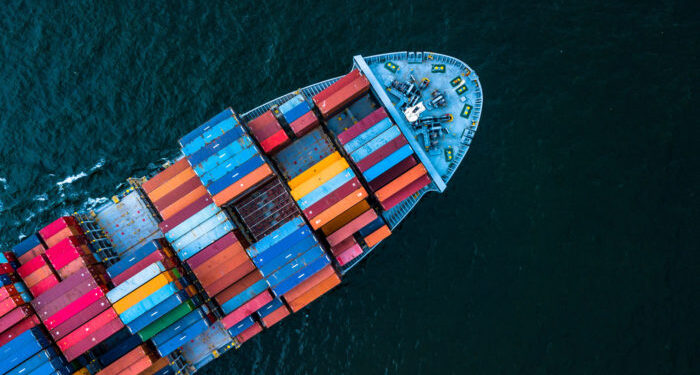The shipping industry has the ability to hit its international decarbonisation goals by following pathways, says a study, produced for OGCI and Concawe by Ricardo.
The study outlines the need for large-scale deployment of new technologies and the use of low-carbon fuels to help the sector reduce greenhouse gas emissions by at least 50% by 2050 compared with 2008 levels to achieve the International Maritime Organization’s (IMO) target.
The study, produced for OGCI and Concawe by Ricardo, a global energy and environmental consultancy, outlines three possible pathways broadly characterised as:
#1 The early pursuit of green ammonia and hydrogen
- Ammonia and hydrogen for some new build vessels from 2025, ramping up to all new-build ships by 2035. Transitioning from “grey” to “blue” to “green” pathways for alternative fuels.
- Medium take up of energy efficiency technologies and operational measures. 10% speed reduction assumed for slow steaming.
#2 Replacing fossil fuels with drop-in liquid and gaseous biofuels
- From 2025, HFO, MDO and LNG use increasingly substituted with drop-in biofuels (FAME, HVO and bio-methane (BioLNG)).
- Medium take up of energy efficiency technologies and operational measures. 20% speed reduction is assumed for slow steaming.
#3 Maximum uptake of energy efficiency technologies, carbon capture onboard vessels and the gradual increase of green ammonia and methanol
- Focuses on maximising technology use with subsequent transition to alternative fuels.
- High take up of energy efficiency technologies and operational measures. 30% speed reduction assumed for slow steaming. Onboard carbon capture included in some new vessels (using carbon-containing fuels) post-2030.
- Ammonia and methanol fuel gradually introduced on new-build vessels by 2035, with LNG being used by the remainder of new vessels. Transitioning from grey to blue to green pathways (and LNG to BioLNG) for alternative fuels.
Unlocking these zero-carbon fuel pathways will avoid higher emission pathways becoming locked in. At the same time, the deployment of energy efficiency technologies and operational measures is also vital in the short term to reduce the consumption of fossil fuels prior to that transition
Tim Scarbrough, Ricardo Associate Director and one of the report authors, said.
The IMO ambition is estimated to be met by all three pathways
The results of the modelling showed that, by 2050, the emissions under the baseline scenario would be between 4% and 82% higher than in 2008, depending on the demand scenario assumed, compared to the IMO ambition of a 50% reduction.
These increases in emissions were calculated on a “well-to-wake” (WTW) basis, as this represents the full impact on the global climate and is important when considering the impact of alternative fuels.
Under the three fuel and technology packages, these increases in emissions are replaced by significant decreases in most cases by 2050:
- Under package 1, emissions are reduced by over 70% relative to 2008 under all three demand scenarios, comfortably exceeding the IMO ambition.
- Under package 2, the reductions in emissions are very similar to those under package 1.
- Under package 3, the reductions in emissions relative to 2008 reach approximately 100% under all three demand scenarios. The package includes a transition to “green”, but carbon-containing, fuels and the use of on-board carbon capture technology.
Barriers identified to the successful deployment of the fuels and technologies
However, the report notes that there also certain obstacles that harm the advance of alternative fuels and technologies, such as:
- For all three packages, the production and supply of alternative fuels will need to be substantially increased
- By 2050, between 9 EJ and 12 EJ of alternative fuels will be required per annum, compared to a total fuel demand in 2020 of approximately 14 EJ; the fuel production infrastructure investment needed to achieve this is estimated to be between $66 billion and $436 billion (between 2020 and 2050 under the central demand scenario, combining capital and operating expenditure, using a 10% discount rate).
- The adoption of alternative maritime fuels depends on the availability of the associated infrastructure for their supply to vessels.
- Although engine technology to accommodate alternative fuels (such as ammonia) is already under development by engine manufacturers, this will need to be scaled up once demonstrated.
- Significant investments will need to be made in the developments of technologies.
- The price differential between traditional marine fuels and alternative fuels remains a large barrier.
- Marine fuels considered in this study that can be produced from fossil fuels or renewable energy, will need to have reliable certification schemes to provide assurance that the chemically-identical fuel is from green sources.






























































